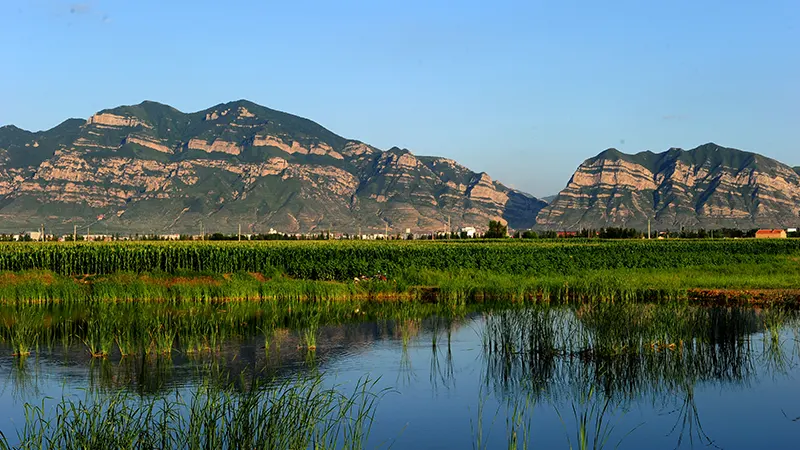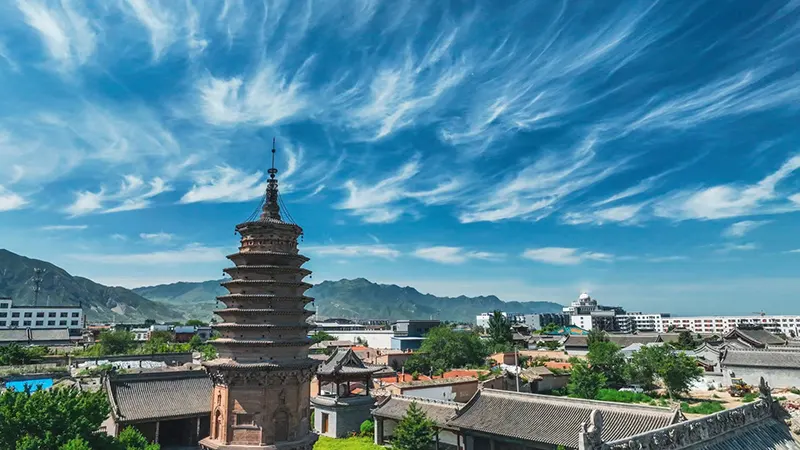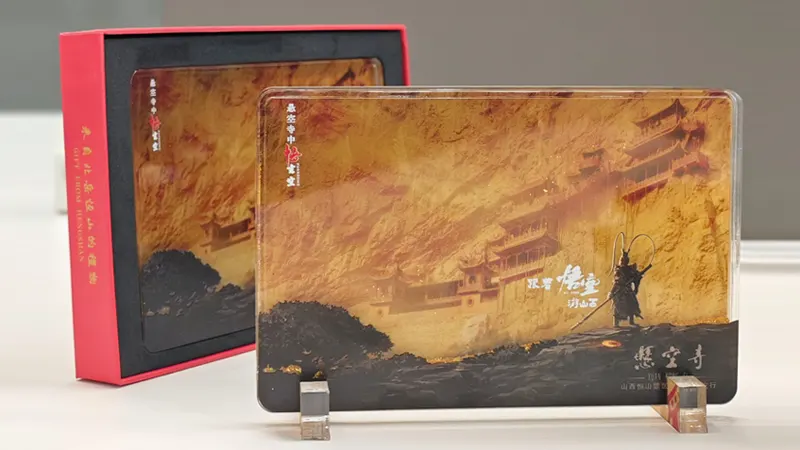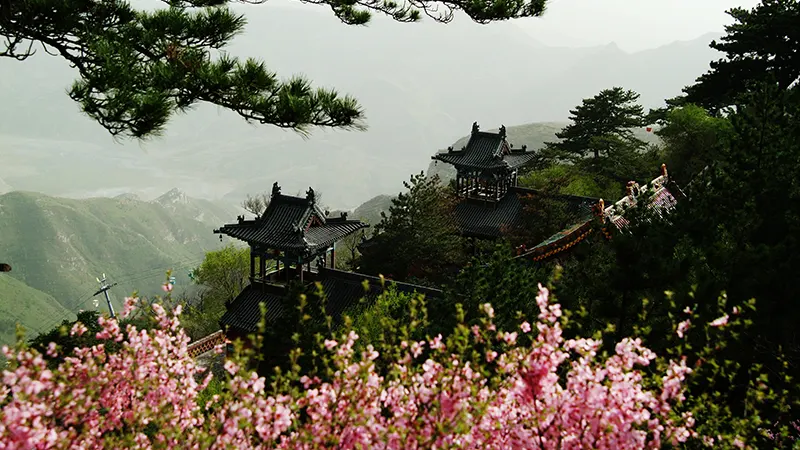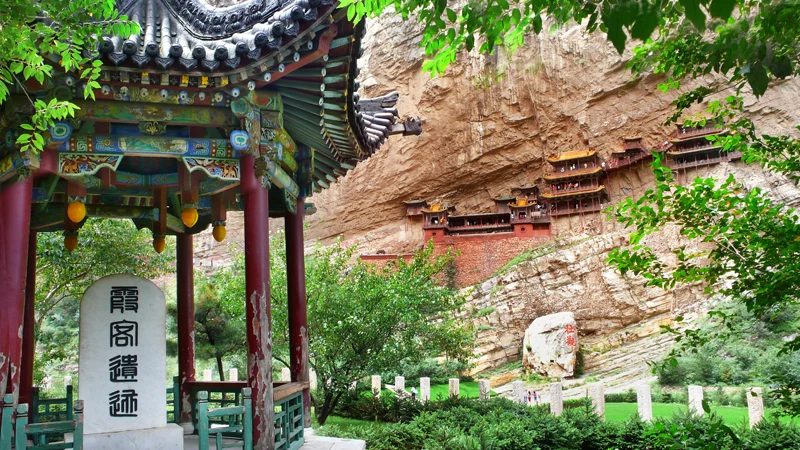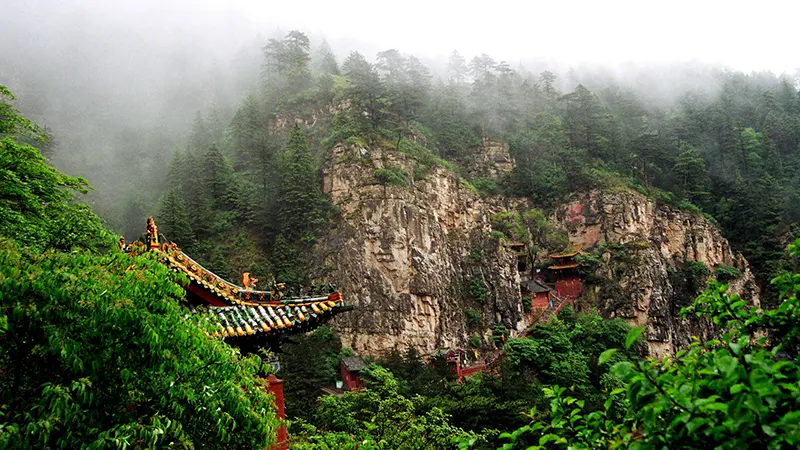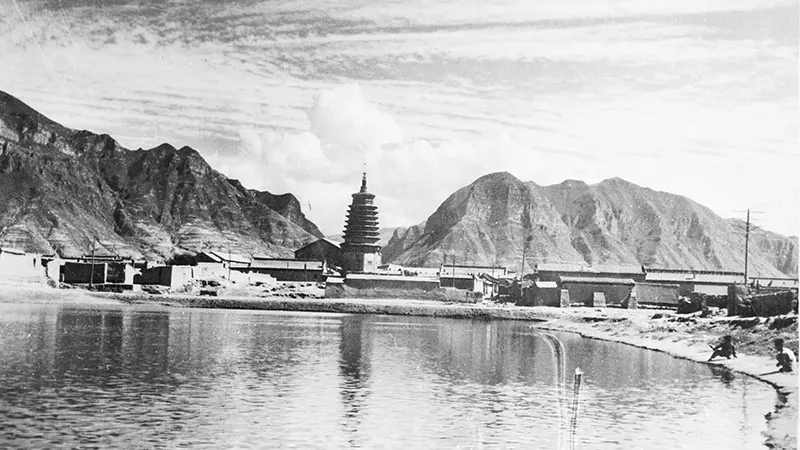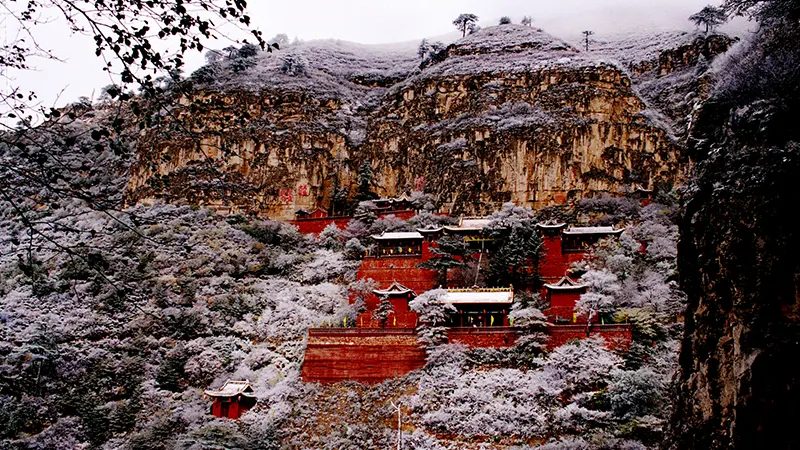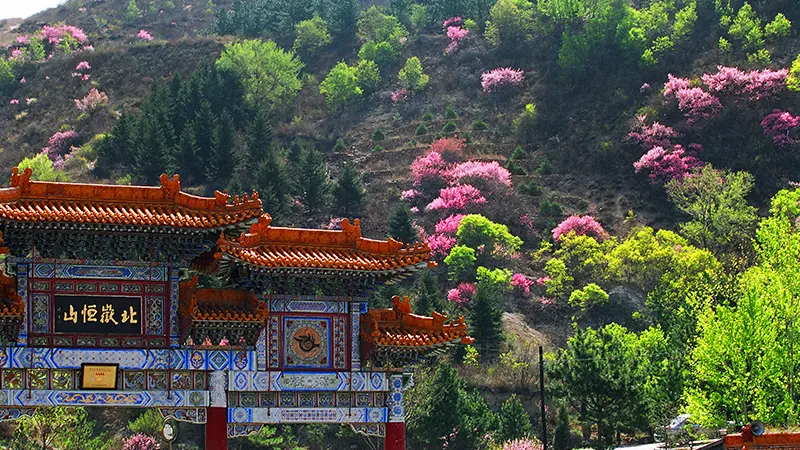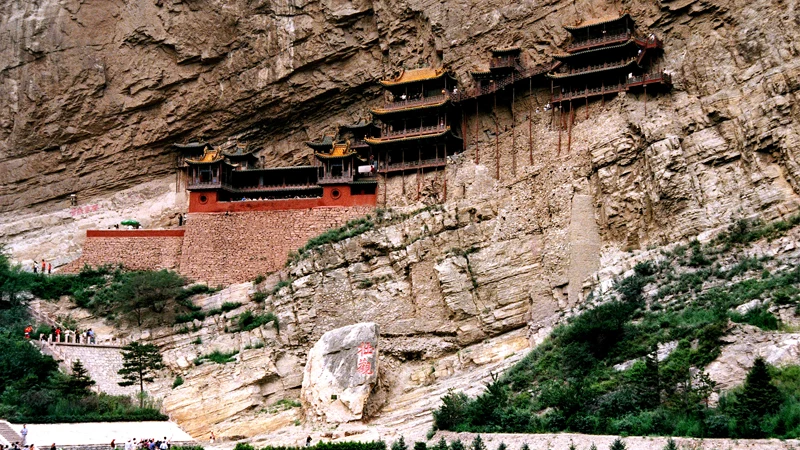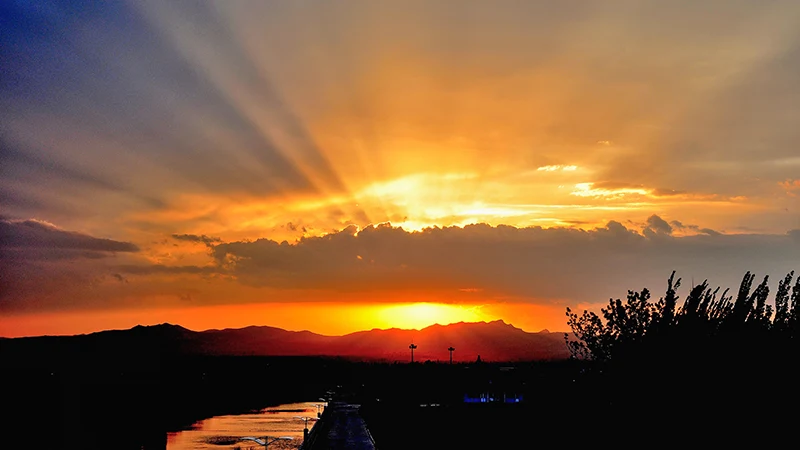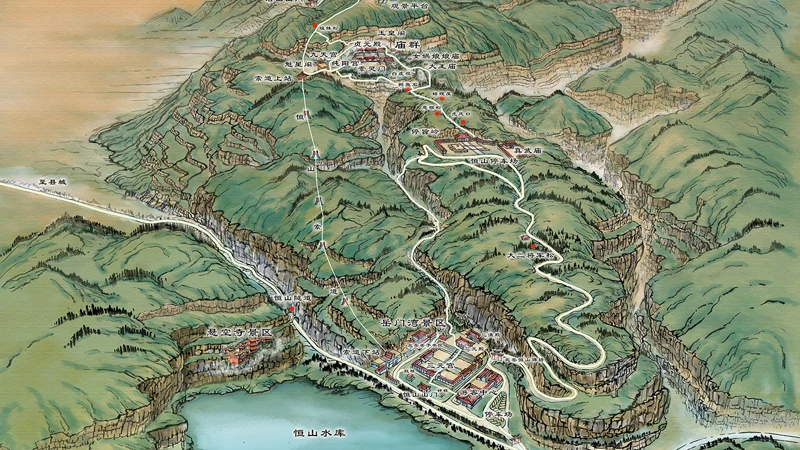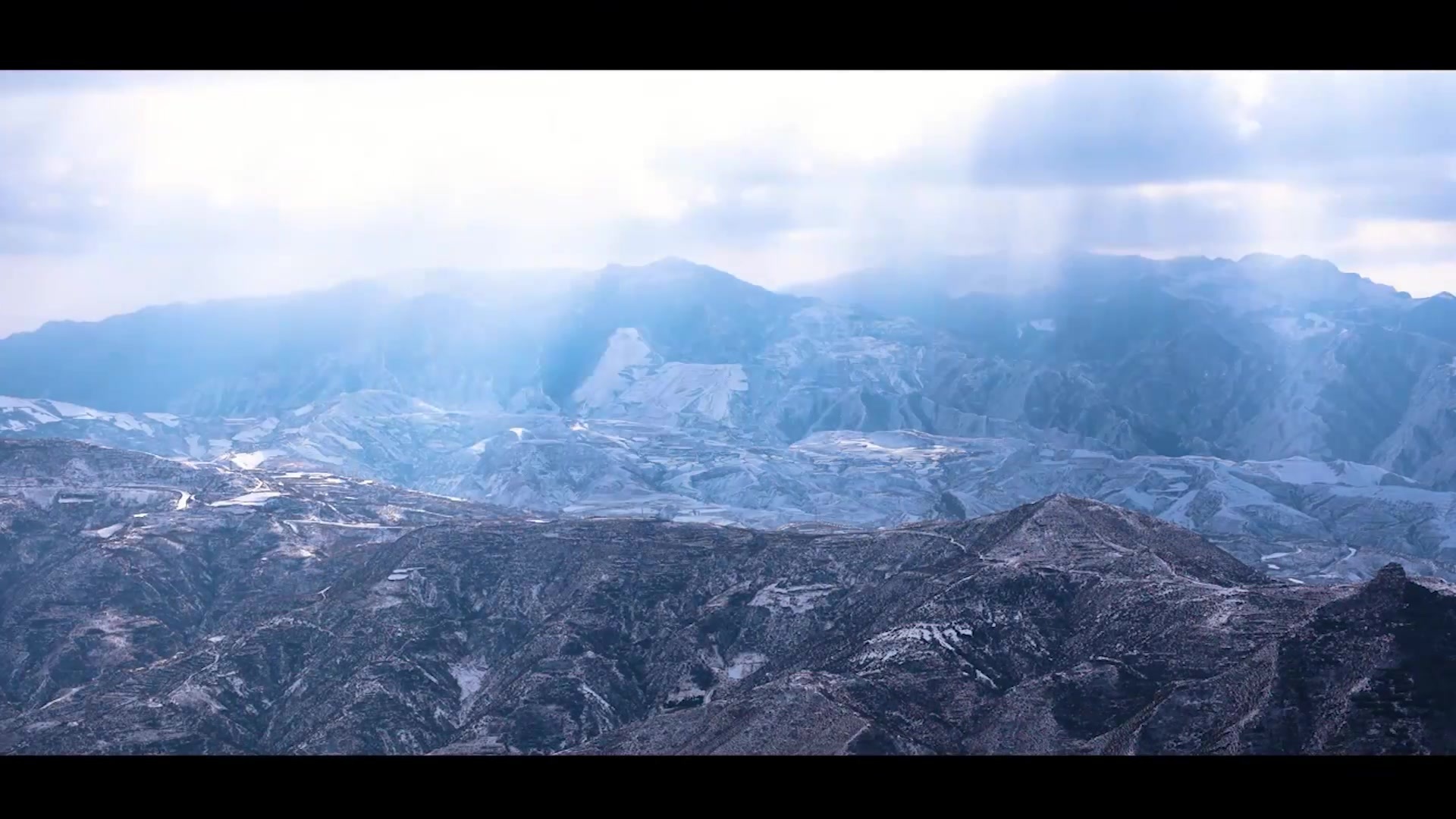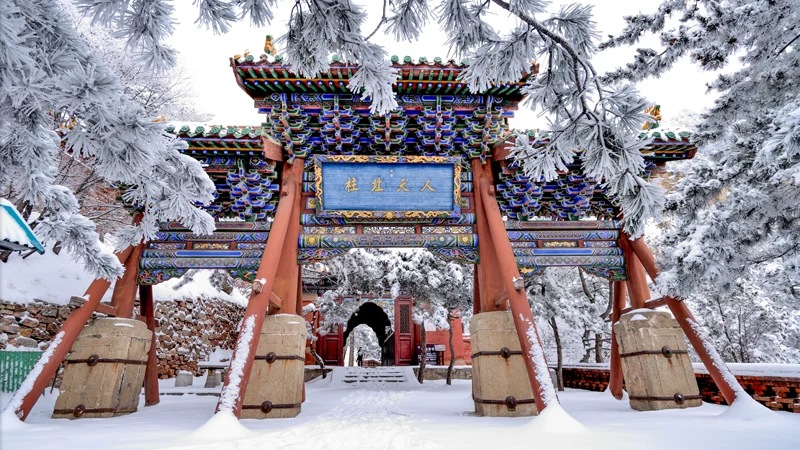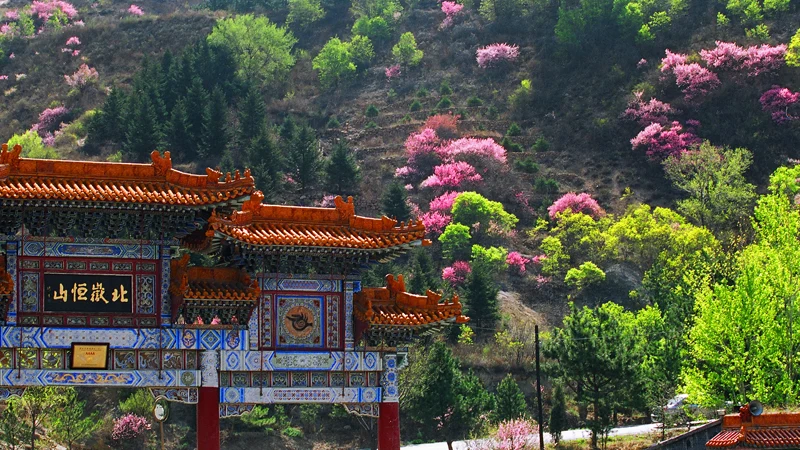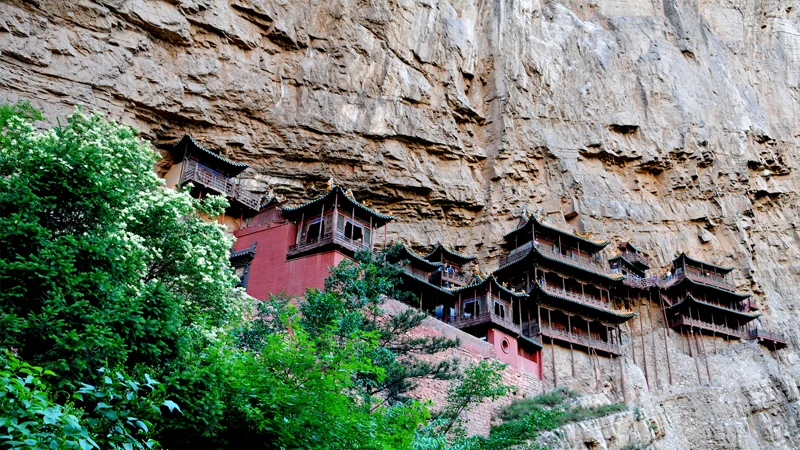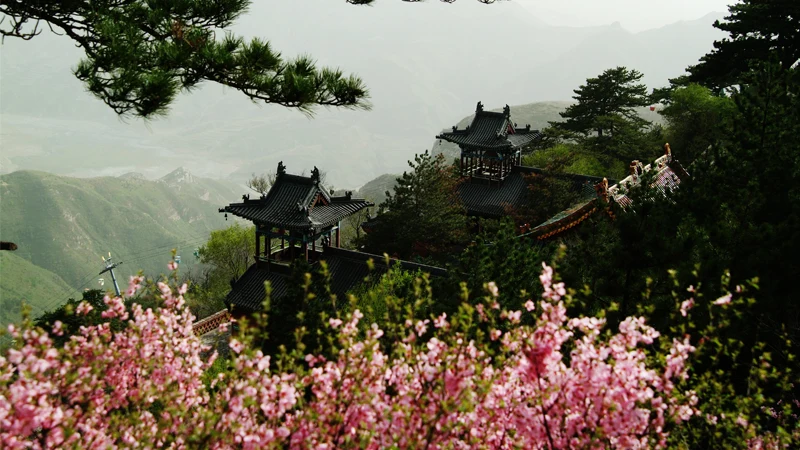Hengshan Mountain
World Famous Tourism Mountain National Natural and Cultural Dual Heritage National Tourism Summer Resort
Hengshan Mountain is located 4 kilometers south of Hunyuan County, Datong City, Shanxi Province. It is known as one of the Five Great Mountains of China, along with Mount Tai (East), Mount Hua (West), Mount Heng (South), and Mount Song (Central), and is famous throughout the country. Hengshan Mountain stretches for 500 li (about 250 kilometers) from east to west, with 108 magnificent peaks, towering and stretching across the northern border. In 1982, it was designated as a national scenic area by the State Council, and it includes 13 sub-scenic areas with unique scenery and different functions. The main scenic area covers an area of 122.38 square kilometers, with 7 nationally key cultural relics protection units and 8 provincial key cultural relics protection units.
The main peak of Hengshan Mountain, Tianfeng Ridge, has an altitude of 2016.1 meters. With its towering peaks and majestic momentum, it is known as the "North Pillar of Heaven and Earth" and the "Famous Mountain of the Isolated Pass." The mountain's structure is a typical woodcut-style fault mountain, with layers of cliffs and green belts. Under the golden glow of the setting sun, the scenery is particularly magnificent. The great Tang Dynasty poet Jia Dao once described the majestic scenery of Hengshan Mountain with the poem "There are five great mountains in the world, and Hengshan is located in the north. The rocks and peaks are stacked thousands of times, and the strangeness and vastness are difficult to measure." The famous Northern Song Dynasty painter Guo Xi used the phrase "Hengshan Mountain is like walking" to depict its rugged terrain.
Hengshan Mountain has a long history and brilliant culture. It is one of the famous tourist destinations and the birthplace of Taoism in northern China. As early as more than 4,000 years ago, Emperor Shun designated Hengshan Mountain as the Northern Mountain; during the Qin Dynasty, it was one of the twelve famous mountains, and Hengshan Mountain was known as the "second mountain in the world." Later, Emperor Wu of the Han Dynasty, Emperor Taizong of the Tang Dynasty, Emperor Xuanzong of the Tang Dynasty, and Emperor Zhenzong of the Song Dynasty all conferred titles upon the Northern Mountain, and Emperor Taizu of the Ming Dynasty revered the Northern Mountain as a god. As the "Fifth Small Cave Heaven" among the 36 Taoist Cave Heavens, there are legends of famous Taoist masters practicing on Hengshan Mountain throughout history, including the Three Mao True Monarchs, Zhang Guolao (one of the Eight Immortals), and Zhang Sanfeng, who all left behind many beautiful legends and stories. Hengshan Mountain boasts both natural and cultural landscapes, with forests, ancient temples, Taoist and Buddhist traces, strange rocks, and mysterious caves, forming the famous 18 ancient scenic spots of Hengshan Mountain. As early as the Ming Dynasty, a large religious architectural complex of "Three Temples, Four Shrines, Nine Pavilions, Seven Palaces, Eight Caves, and Fifteen Temples" was formed. The Northern Yue Temple, built on the main peak, is magnificent and has been a place of great incense. Ancient steles and inscriptions are everywhere, making it the only example among the Five Great Mountains where the Yue Temple is built on the main peak. The Hanging Temple, built in the late Northern Wei Dynasty, has a history of more than 1500 years. It is located between the cliffs of the second main peak, Cuiping Peak. It is built in mid-air, with flying beams as its foundation, cleverly using rocks for support, perched on dangerous cliffs and overlooking deep valleys. It is known as a "fairyland on earth." From afar, it looks like a mirage, appearing and disappearing in the clouds; up close, it looks like a delicate paper-cut screen, hanging high at the north gate of Hengshan Mountain. Li Bai, the great poet of the Tang Dynasty, was so impressed that he wrote "magnificent" to praise its danger, and Xu Xiake, the great traveler of the Ming Dynasty, praised it as a "great sight in the world." In June 2010, Time magazine listed it as one of the ten most dangerous buildings in the world.
In addition, the scenic area also has Yuan Dynasty murals in Yong'an Temple, Jin Dynasty brick towers in Yuanjue Temple, Han white marble carvings of the tomb of Li Yu, Tangtou Hot Spring, known as the "No. 1 Spring in North China," Qianfo Ridge, known as the "Little Huangshan in the North," Shenxi Wetland Park, and the Majia Courtyard and the ancient state government office in the county, which feature typical Ming and Qing architectural styles, all have high resource value and unique regional characteristics. Hengshan Mountain has a unique military geographical location and military cultural connotation. It connects with Yamen Pass to the west, crosses Youyan to the east, screens Sanjin to the south, and overlooks the desert to the north. The inner Great Wall winds along it, and beacon towers are dotted everywhere. Ningwu, Yamen, and Pingxing passes rely on it for defense, and since ancient times, it has been the "key to the Central Plains" and the "boundary between China and the barbarians." In history, thirteen emperors personally led troops to fight in this area, and many famous military generals, such as Meng Tian, Li Mu, Wei Qing, Huo Qubing, Xue Rengui, the Yang Family Generals, Xu Da, and Chang Yuchun, all fought on the foot of Hengshan Mountain, leaving behind numerous war stories and cultural relics. The legend of Zhao Jianzi burying jade on Hengshan Mountain during the Spring and Autumn Period and Zhang Yi's ancient saying, "The danger of Hengshan Mountain will break the backbone of the world, and whoever gets Hengshan Mountain will get the world," have long been revered by wise men.
Hengshan Mountain has beautiful scenery and a pleasant climate. In spring, the mountain peach blossoms are in full bloom, with colorful colors; in summer, the pine waves are rustling, and the clouds are steaming and the mist is rising; in autumn, the sky is high and the clouds are light, and the forests are dyed in various colors; in winter, it is covered in silver, and it is exceptionally enchanting. "Green mountains paint without ink, and beautiful scenery speaks for itself." Come, friends, Hengshan Mountain welcomes you!


